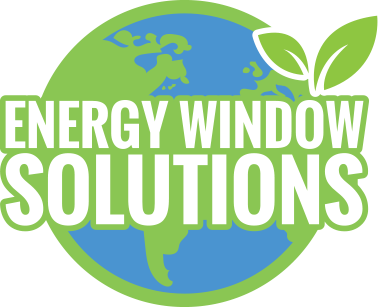
How To Choose Energy Efficient Windows | Fort Worth, TX
If you’re tired of high energy bills and drafty rooms, it may be time to upgrade to energy efficient windows. Not only can they save you money, but they also offer a myriad of benefits for your home and the environment. However, choosing the right windows can be challenging with many options. That’s why we’ve compiled this comprehensive guide on selecting the perfect energy efficient windows for your home. From double-pane to triple-pane, Low-E to gas-filled, we’ll walk you through everything you need to know to make an informed decision.
Tips for Choosing the Right Windows
The Right Frame Can Make All The Difference
Metals conduct heat far more easily than wood. Thus, a wooden frame will be more thermally efficient than an aluminum one. However, this doesn’t mean that a wooden frame is always the best option for reducing energy costs. As with any product, there are advantages and disadvantages to the various materials used to make window frames. You must choose what works best for your preferences and financial situation.
- Wood: Because they are less prone to cold or heat transfer, wooden frames provide the best insulation value. If cared for properly, a high-quality wood frame can last for decades. Although they are more labor-intensive than other frame options, they can be stained or painted to complement the external design scheme. One major disadvantage is that they may be prone to rotting in rainy climates. Wood is more expensive than vinyl, yet both are eco-friendly if obtained from responsible sources. It’s a feature many buyers covet, so installing wooden energy efficient windows could boost your home’s market price.
- Vinyl: Despite its lower cost, vinyl is not necessarily a “cheap” material. Vinyl windows that are well-made and professionally installed can be a great option thanks to their insulated glass and airtight frames. However, the color options for vinyl windows are limited, and some people don’t like the way it looks on their houses.
- Aluminum: The strength and longevity of an aluminum frame are its primary benefits. It has an anodized or factory-baked finish that doesn’t tarnish and needs almost no upkeep. Because of its lightweight and malleable construction, it can be easily molded into unique shapes. Their durability makes them the go-to choice in hurricane-prone regions with stringent zoning regulations. However, aluminum frames are prone to condensation throughout the winter due to their poor heat retention properties. A spacer or other non-conductive material can help mitigate this issue by slowing cold transfer.
- Wood-Clad: This product is a highly sought-after window frame because it mixes low heat-transfer wood and low-maintenance vinyl or aluminum coating. However, these energy efficient windows should have a rubber membrane and sill pan to prevent water from seeping in and rotting the wood below.
Design
Some window designs are better than others. Two operable designs stand out for their aesthetic appeal and practical functionality.
- Casement windows open by turning a handle and swinging the sash outward. They are common in windy areas because they tighten their seal against the outside air. Nonetheless, regular upkeep of the hinges and seals is necessary to keep them sturdy and functioning correctly.
- Double-hung windows: You can find these in many older homes and structures around the United States. Double-hung windows can be opened by sliding the bottom sash upwards. They’re effective sometimes, but air leakage between the sliders means these windows might not be the best choice in windy or cold areas.
Additional Features
Look for these additional features that will enhance energy efficiency.
- Double-pane and triple-pane energy efficient windows: Windows with at least two panes of glass are good for thermal-insulation. Nowadays, double-paned windows are the norm for new construction. However, triple-paned windows are also a viable option.
- Low-E coating: Low-E is an abbreviation that stands for low emissivity. Low-E glass in windows allows for natural light to enter while blocking the sun’s infrared and ultraviolet radiation. Contrarily, tinted windows effectively reduce the transmission of visible light and infrared and ultraviolet radiation. Low-E coating is applied to the window’s interior or exterior for optimal performance in various climates. Applying the coating outside will send the sun’s rays back into the atmosphere, which is ideal for areas with higher cooling costs than heating costs. Similarly, it can also be used to reflect heat back inside a building if applied to the interior.
- Gas-injected glass: Krypton and Argon gas, when used together with triple-paned windows, can further reduce heat loss, condensation, and cold weather’s adverse effects. They are colorless, odorless, and non-toxic. When injected between glass panes, they reduce heat conduction more than air.
Energy Efficiency Ratings
Look for labels that reflect the energy-saving benefits of the windows you’re considering purchasing. Windows with the ENERGY STAR® and NFRC designations have undergone extensive testing to ensure they fulfill strict performance requirements.
Below are some basic window metrics included in the NFRC label:
- U-Factor: The U-Factor measures how much heat can pass through a material and was developed by the National Fenestration Rating Council (NFRC). Most windows fall between the 0.15 to 1.2 rating range. The lower the number, the less heat flow there is. For instance, a U-factor of 0.4 indicates a window is significantly more energy efficient than one with a U-factor of 1.0.
- Solar Heat Gain Coefficient (SHGC): A window’s solar heat gain coefficient (SHGC) indicates how much sunlight may penetrate the glass. It can be between 0 and 1, with lower values indicating less solar heat gain. Free solar heat is desirable in colder climates, but keeping the cold air out is essential. As such, while SHGC is important, prioritizing the lowest U-Factor is more critical. On the other hand, SHGC is crucial in a sunny region like Fort Worth. Sunlight should be blocked out as much as possible in such a sunny climate.
Talk to a Professional
Another resource to consider is consulting with a window professional like Energy Window Solutions. By doing this, you can rest assured that you are getting the best energy efficient windows available. It is our responsibility to be familiar with the jargon, technology, and subtleties associated with high-quality window installation. We can advise you on which windows are ideal for your needs.
Let Efficiency Shine Through: Upgrade Your Windows Today
Choosing energy efficient windows is an essential investment for your home that can save you money on energy bills and reduce your carbon footprint. Considering the factors we’ve discussed, such as U-factor, solar heat gain coefficient, and window framing material, will help you decide when selecting the right energy efficient windows for your home.
At Energy Window Solutions, we offer a wide selection of energy efficient windows designed to meet your needs and budget. Our expert team can help you navigate the various options and select the perfect windows for your home. Don’t hesitate to contact us today to learn more about how we can help you upgrade your windows and start enjoying the benefits of energy efficiency!
See our most recent blog on this topic here.


